Chapter: Biology of Disease: The Nature and Investigation of Diseases
Role of Hospital Laboratory Tests
ROLE OF HOSPITAL LABORATORY TESTS
Tests performed by the pathology laboratory can
assist clinicians in investigating disease. The tests may only give a
subjective assessment, such as when a pathologist assesses the types of cells
obtained from a fine needle aspirate of a suspected breast tumor when
investigating breast cancer. However, tests may provide quantitative
information, such as the concentration of thyroid hormones in the serum, that
can then be compared with a normal
value. Unfortunately, the term normal is often difficult to define in clinical
terms. To alleviate this problem, reference
ranges have been widely adopted. Numerical reference limits are based on
the mean value plus or minus two standard deviations against which test results
can be compared. The uses of reference ranges are explored more thoroughly
later. The term normal range is
still used synonymously with reference range.
In general, the roles of laboratory tests include:
•
the diagnosis, to identify the disease;
•
monitoring of treatment;
•
screening and assessment of risk;
•
the prognosis, to inform the physician and the
patient of the likely outcome;
•
detection of complications.
The results of laboratory investigations are used in
conjunction with the patient’s clinical history and examination to determine
the nature of the disease affecting the patient. Thus a low value for the
concentration of glucose in the blood of a patient can confirm hypoglycemia and
the clinician can start palliative treatment, even though the cause of the
hypoglycemia may be unknown at this stage.
Laboratory tests may be used to monitor the course of
an illness or the effects of its treatment. For example, the concentration of
glycated hemoglobin in erythrocytes is measured in diabetics on a regular
basis. The higher the concentration of glucose in the serum, the more readily
the sugar reacts with proteins in a nonenzymic reaction to form glycated
hemoglobin, in which sugar molecules are covalently attached to the protein.
Thus the amount of glycated hemoglobin is an indicator of average glycemia in
such patients over a period of days or months. Diabetics who are not complying
with their treatment by not taking their insulin regularly or giving themselves
the wrong dose, or whose treatment is ineffective, can be identified because
poor control of blood glucose gives rise to higher concentrations of glycated
hemoglobin than is normal or even found in well-controlled diabetics (Figure 1.14).
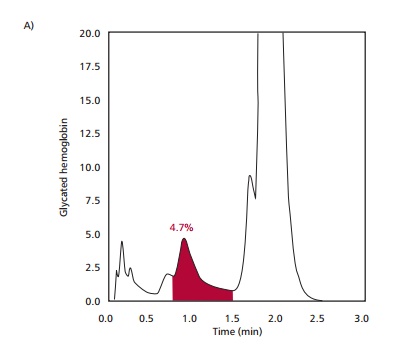
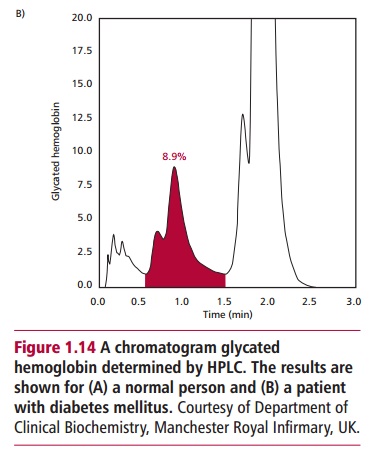
Laboratory tests may be used to detect a disease before it presents clinically. This is
referred to as screening. For example, the concentration of phenylalanine in
the serum of all newborn babies in the UK is measured to detect
phenylketonuria Affected children have a
high concentration of serum phenylalanine (hyperphenylalaninemia) and
metabolites of phenylalanine, such as phenylpyruvic acid are usually present.
If untreated, this condition leads to irreversible brain damage but if caught
early and treated by diet, individuals develop normally. Other examples of
screening tests include smears taken from the lining of the uterine cervix (Margin Note 1.1 and Figure 1.15). Screening tests may also be
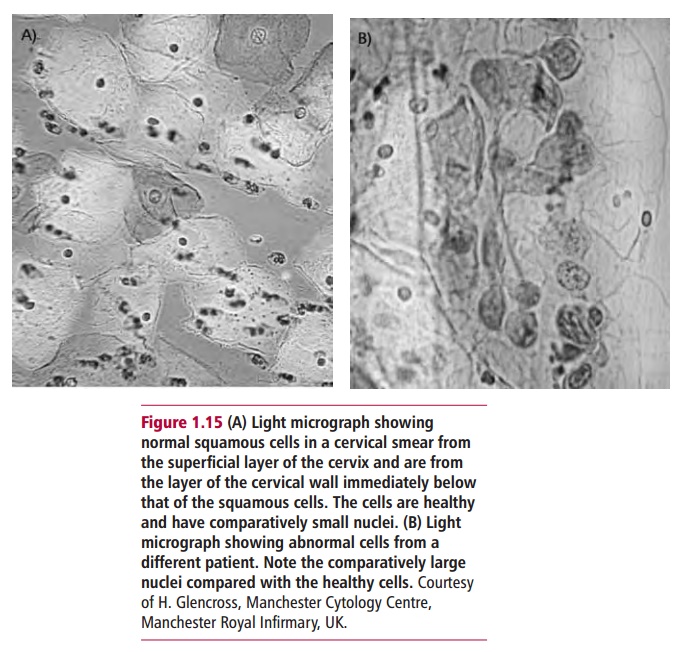
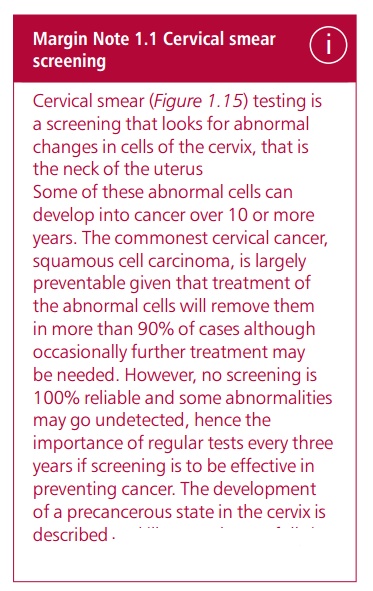
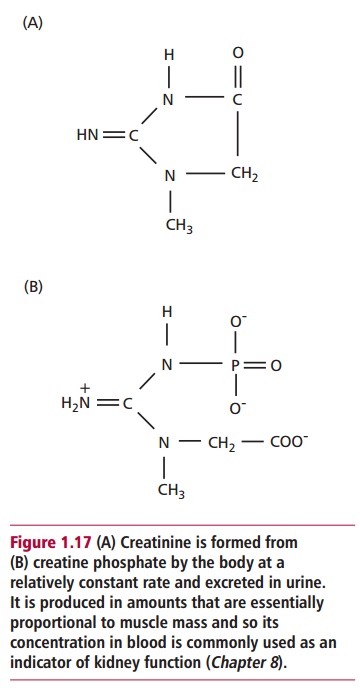
Laboratory tests can be used to indicate the risk of
developing a disease. The risk of developing coronary artery disease increases
with increasing concentration of blood cholesterol, more so if other risk factors,
such as smoking, obesity or diabetes, are present.
Tests in pathology laboratories can indicate the
likely outcome of a disease. Renal failure is a progressive disease that leads
to a gradual build up of creatinine in the serum (Figure 1.17). Measurements of serum creatinine may therefore
indicate end-stage renal disease when the patient may need dialysis to survive.
Vital information regarding the development and
complications in a particular disease may be provided by laboratory tests.
Urine is normally essentially free of protein; hence the presence of 30 to 200
mg dm–3 of serum albumin in the urine
(microalbuminuria) of diabetic patients may indicate the development of
nephropathy, a common secondary complication of diabetes.
Related Topics